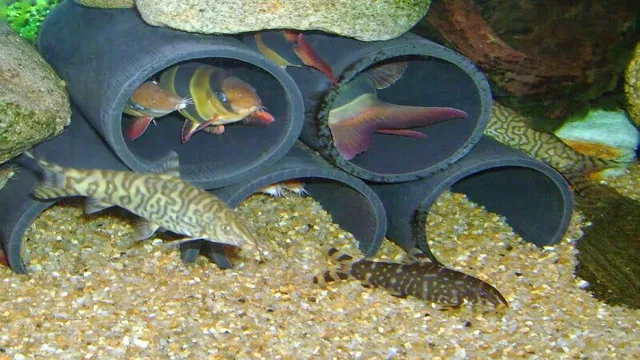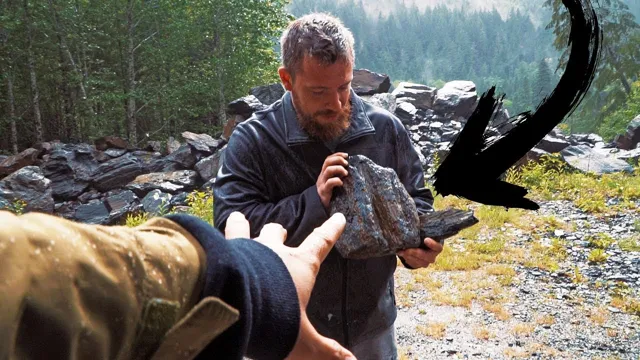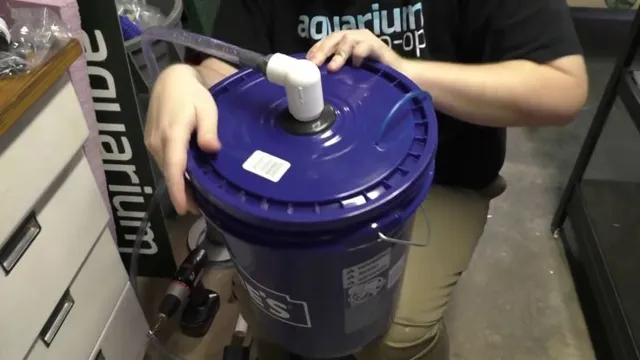Are you thinking of adding a turtle to your aquarium but don’t know where to start? Getting a turtle for your aquarium can be a fascinating experience but catching one can be challenging. Whether you want to obtain a turtle from the wild or a pet store, it is essential to know the right method. In this post, we will show you how to catch a turtle for your aquarium successfully.
If you’re ready to embark on this adventurous journey, then read on! Catching a turtle for your aquarium can be a tricky task because turtles are cautious creatures that can quickly retreat into their shells when frightened. Before you begin, you need to understand the behavior and habitat of turtles. Turtles can be caught by hand, trap, or net.
However, the approach you choose will depend on the turtle’s size, type, and location. If you’re an aspiring turtle owner, catching a turtle can be an exciting experience. Not only will you learn about a turtle’s behavior, but you’ll also get to see them up close in their natural habitat.
Just imagine picking up a little turtle and bringing it home! However, it’s essential to remember that these creatures are living beings and require proper care and attention. To sum up, catching a turtle for your aquarium requires careful planning and knowledge of the species. It’s essential to know what you’re doing to provide them with the best quality of life possible.
Are you ready to take on the adventure? Read on to discover the best ways to catch a turtle and start your journey as a turtle owner.
Understanding Turtles and Their Habitat
If you’re looking to add a turtle to your aquarium, it’s important to first understand their natural habitat. Turtles are commonly found in freshwater ponds, lakes, and rivers. They need an appropriate environment in their tank that mimics these natural conditions, such as an area for basking in heat and a place to dive for cooler water.
When catching a turtle for your aquarium, it’s important to do so humanely. You can use a small net or trap to catch them, being careful not to harm them or their shell in the process. It’s also crucial to research the specific type of turtle you plan to keep, as different species have different needs in terms of diet, temperature, and tank size.
With the proper knowledge and care, keeping a turtle in your aquarium can be a fulfilling and enjoyable experience for both you and your new shelled friend.
Types of Turtles for Aquarium
When it comes to keeping turtles in an aquarium, it’s important to remember that these fascinating creatures have specific habitat requirements. Different types of turtles have different needs, so it’s crucial to research the species you’re interested in before bringing one home. For example, some turtles need a lot of water to swim in, while others prefer more land-based habitats.
Some turtles are also more suited to living alone, while others thrive in groups. It’s important to recreate the type of habitat your turtle would have in the wild in your aquarium, including providing basking areas and appropriate lighting. By understanding your turtle’s needs, you’ll be able to create a suitable environment for them to thrive in.
So whether you’re interested in a red-eared slider, a painted turtle, or a box turtle, take the time to learn about their habitat requirements before making a decision.

Habitat for Turtles in the Wild
Turtles are fascinating reptiles that have intrigued people for centuries. They live in a wide range of habitats, from freshwater ponds and rivers to the open ocean, and are adapted to life in both aquatic and terrestrial environments. Understanding their habitat is crucial to their survival, as they rely on specific conditions for feeding, breeding, and hibernation.
Turtles need access to both land and water to thrive, with some species requiring more of one than the other. For example, sea turtles spend most of their time in the water, while terrestrial turtles like box turtles spend most of their time on land. Regardless of their preference, all turtles need shelter, food, and water to survive.
They may seek out hiding places like rocks, logs, or dense vegetation for protection from predators or extreme weather conditions, and they need a source of food nearby, such as plants or small prey like insects or fish. Overall, providing a suitable and natural habitat for turtles is essential for their health and well-being, and can help ensure their survival in the wild. (See Also: How Saltwater Aquarium Ecosystem Works: A Comprehensive Guide to Understanding Marine Life)
Preparation for Catching a Turtle
If you’re considering adding a turtle to your aquarium, you may be wondering how to catch one. It’s important to remember that turtles are not toys and should be treated with care and respect. Before you attempt to catch a turtle, make sure you have all the necessary equipment, including a net, gloves, and a container to transport the turtle.
The best time to catch a turtle is early in the morning or late in the evening, when they are most active. Look for turtles in shallow waters or basking on rocks or logs. When you spot a turtle, approach it slowly and quietly.
Use your net to scoop the turtle up from underneath and gently place it in your container. Remember to handle the turtle with care and avoid injuring it. With these tips in mind, you’ll be on your way to catching a turtle for your aquarium in no time.
Tools and Materials Needed
To successfully catch a turtle, you need to have the right tools and materials. The most essential items include a net, gloves, a turtle trap, a pair of scissors, a towel, and a container for water. A sturdy net will make it easier to capture a turtle from the water, while gloves will offer protection from bites and scratches.
The trap is a useful tool if you’re trying to catch a turtle that’s hiding in a hard-to-reach area, while the scissors will come in handy for cutting any tangled fishing lines or vegetation. Finally, a towel will be useful for drying off the turtle and keeping it calm after capture. Remember to fill the container with water to keep the turtle moist and comfortable during transportation.
With these materials, you’ll be well-equipped to catch a turtle in a humane and safe manner.
Identifying the Best Spot to Catch a Turtle
Identifying the Best Spot to Catch a Turtle If you’re planning to catch a turtle, it’s important to know where to look. Most turtles love water bodies, such as rivers, lakes, ponds and swamps, so that’s where you should start. You can also check out areas near wetlands or marshes.
Turtles also tend to bask in the sun on rocks or logs, so you should look for a spot with plenty of sunshine and a good view of the water. If you’re looking for a specific species, such as snapping turtles, you may need to do a bit more research on their preferred habitats. It’s important to note that some turtles, like the box turtle, are actually terrestrial and won’t be found near water.
In this case, you should look for areas with plenty of foliage and cover. Remember, if you’re planning to catch a turtle, make sure it’s legal in your area and that you have the proper equipment and permits. Happy turtle hunting!
Catching the Turtle
If you’re looking to add a turtle to your aquarium, catching one might seem like a daunting task. However, with a few simple techniques, it’s possible to catch a turtle safely and securely. One option is to use a baited trap, which can be made using a wire mesh cage and a piece of bait such as fish or vegetables.
Place the trap in a shallow area of the water where turtles are known to frequent, and wait for the turtle to enter the cage. Another option is to use a net, which can be a bit trickier but is also more efficient. Gently maneuver the net around the turtle and slowly raise it out of the water, being careful not to harm the turtle or damage its shell.
Ensure that your aquarium is large enough to accommodate a turtle comfortably, and that it is equipped with all of the necessary filtration, lighting, and heating equipment. With the right precautions and equipment, catching a turtle for your aquarium can be a fun and rewarding experience.
Baiting Techniques
When it comes to catching turtles, baiting techniques are essential. One of the best ways to lure turtles is to use live bait such as worms or minnows. You can place the bait in a wire mesh trap and submerge it in the water near where you think turtles are present. (See Also: How to Level Aquarium Stand on Carpet – Tips and Tricks for Perfect Stability)
Another popular method is to use a fishing line with a hook and attach the bait to it. You can then slowly reel in the line to attract the turtle and wait for it to bite. Additionally, some people use artificial lures designed to imitate the movements of turtles’ natural prey to attract them.
No matter which technique you choose, it’s important to be patient and wait for the turtle to take the bait. Once you feel a tug on the line or observe the turtle entering the trap, slowly reel it in and gently remove it from the water. By using these baiting techniques, you’ll increase your chances of catching a turtle and have a fun and rewarding experience.
Different Methods of Trapping Turtles
Trapping turtles can be a challenging yet rewarding experience. There are several methods for catching these elusive creatures, each with its own benefits and drawbacks. One popular method is using traps specifically designed for turtles.
These traps usually consist of a wire cage with bait inside, which entices the turtle to enter and triggers the trap mechanism to close. Another method is using nets to scoop up turtles from the water, but this can be difficult with larger turtles. Hand-capturing is also an option and involves gently grabbing the turtle while it is on land or in the water.
This method requires experience and caution, as certain turtles may be aggressive or carry disease. The most important aspect of trapping turtles is to do it humanely and release them back into their natural habitat unharmed. Overall, each method has its own advantages and should be used responsibly to ensure the safety of both the turtle and the trapper.
Transporting the Turtle to Your Aquarium
When it comes to catching a turtle for your aquarium, it’s important to handle them with care to ensure their safety and the safety of any other aquatic creatures in your tank. The first step is to prepare a container for transportation that is large enough for the turtle to move around comfortably. Then, slowly approach the turtle while being careful not to startle it.
The best method is to scoop the turtle up gently with a net or use your hands, being sure to support its weight properly. Keep in mind that turtles can be surprisingly fast, so always have a plan in case they try to swim away. Once you have safely captured the turtle, transport it to your aquarium as quickly as possible and release it into the water.
Remember, turtles need adequate space, a basking area, and a balanced diet to thrive in an aquarium environment. With proper care and attention, your new turtle can bring joy and life to your aquatic world!
Proper Handling of the Turtle
When it comes to transporting your turtle to its new aquarium, there are several things to keep in mind to ensure your pet’s safety and comfort. Firstly, it’s important to provide a suitable carrier. A plastic container with a lid that’s large enough for your turtle to move around in but small enough to prevent excessive bouncing is ideal.
You can line the carrier with a damp towel to help maintain moisture levels and prevent your turtle from drying out. It’s worth noting that turtles are sensitive to temperature changes, so keep the carrier away from direct sunlight and air conditioning. Additionally, if you’re travelling by car, try to avoid sudden turns or jerky movements that can stress your turtle out.
By taking the time to properly plan and prepare your turtle’s transportation, you’ll help ensure a smooth transition to its new home.
Creating a Comfortable Environment for the Turtle in Your Aquarium
When it comes to transporting your turtle to their new aquarium, there are a few important factors to consider. First and foremost, you want to make sure that your turtle is safe and comfortable during the journey. This means providing them with a suitable container for transportation, such as a plastic container with a lid or a reptile carrier.
Make sure the container is large enough for your turtle to move around in, but also secure enough to prevent any accidents or escape attempts. Additionally, you’ll want to make sure that the temperature is regulated properly to prevent your turtle from getting too hot or too cold. Packing a heat source or cool pack in the container can help maintain a comfortable temperature for your turtle. (See Also: How to Make a Water Purifier for Aquarium: A Step-by-Step Guide to Clean and Clear Water)
Remember, a happy and healthy turtle is crucial to creating a comfortable environment in your aquarium.
Conclusion and Care Tips for Your New Turtle
After all the research and planning, the key to catching a turtle for your aquarium is patience and persistence. Take your time and make sure you have all the necessary equipment, such as a net or trap. Remember to prioritize the safety and well-being of the turtle throughout the process.
And, if all else fails, sometimes the best way to catch a turtle is to simply wait for it to come to you. Happy hunting! (Just kidding, please don’t actually hunt turtles.)”
FAQs
What is the best method for catching a turtle for an aquarium?
The best method for catching a turtle for an aquarium is by using a net with a long handle. Care should be taken to avoid harming the turtle while catching it.
What are the most common mistakes people make while catching turtles for aquariums?
The most common mistakes people make while catching turtles for aquariums include using harmful methods, mishandling the turtle, and not providing proper living conditions.
What size of the net should I use for catching a turtle for an aquarium?
The size of the net depends on the size of the turtle. It is recommended to use a net that is at least twice the size of the turtle.
Is it legal to catch a turtle for an aquarium?
It depends on where you live. Some states and countries have laws preventing the capture of turtles for aquariums. It is important to check with local regulations before attempting to catch a turtle.
How do I prepare the aquarium for a newly caught turtle?
The aquarium should be spacious enough for the turtle to move around easily. It should have an appropriate temperature, lighting, and filtration system. It is also important to include basking spots and hiding places.
What should I feed my newly caught turtle?
The diet of a turtle depends on its species. It is recommended to research on the specific dietary requirements of the species before feeding it.
How can I tell if my newly caught turtle is healthy?
A healthy turtle has clear and bright eyes, smooth skin, and is alert and active. It is important to have a veterinarian examine the turtle before introducing it to the aquarium.







